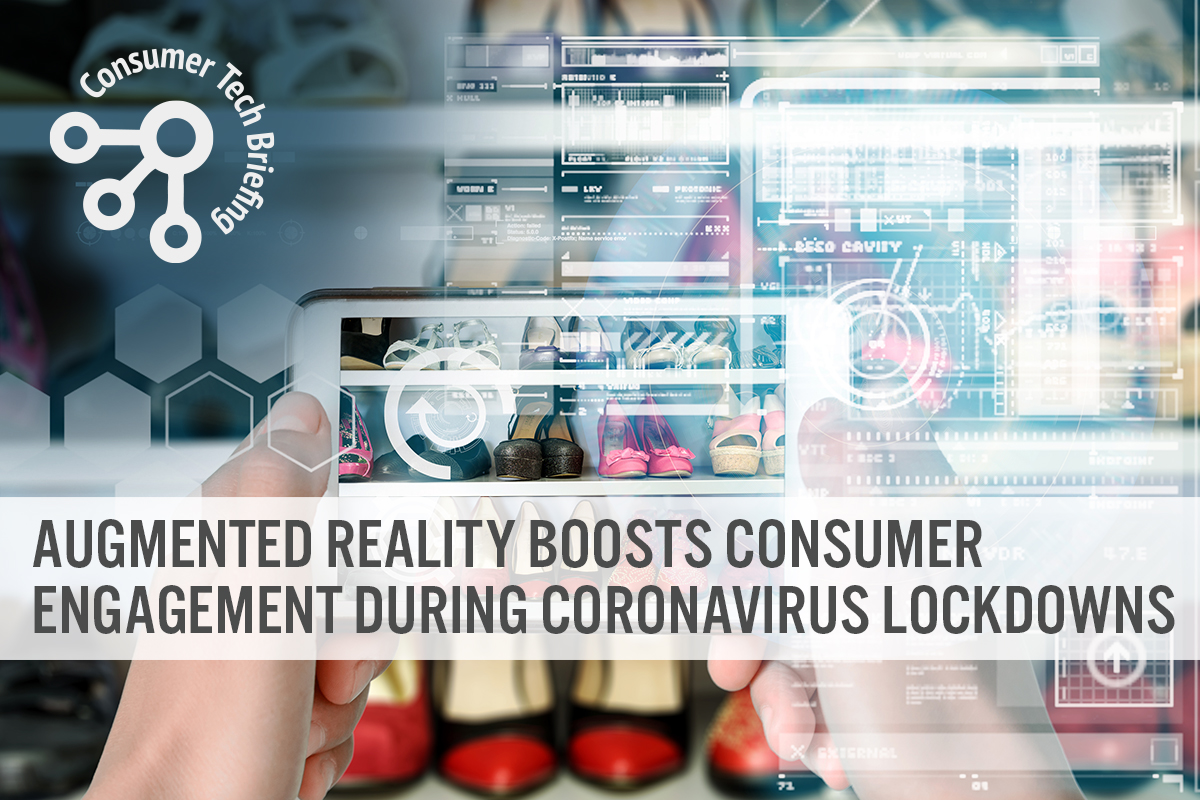
Nitheesh NH
Each month, our Consumer Tech Briefing series discusses developments in the world of technology, with a focus on those most relevant to retail. Stay-at-home measures during the global coronavirus crisis have inhibited consumers from visiting stores or attending events in recent months. Retailers have therefore leveraged AR tools to stay connected with their customers during the crisis. Although many countries have now begun to ease or lift coronavirus restrictions, shoppers may exercise caution in physical retail post lockdown: By incorporating AR technology, retailers can adopt an omnichannel strategy in advance of the new normal in consumer behavior.
Drest and Mary Greenwell Collaborate To Create Makeup Portfolio for the Luxury Styling App
Drest is an experience-lifestyle gaming app that allows users to dress digital avatars while participating in styling challenges. Users can then buy physical versions of the products featured on the app through luxury fashion e-commerce platform Farfetch. Drest was launched in September 2019 and features digital versions of physical clothing from several brands—including Gucci, Louis Vuitton and Prada.
Drest’s latest collaboration with makeup artist Mary Greenwell from May 2020 will see the app incorporate a new makeup assortment created by Greenwell—who has ongoing collaborations with Armani and Chanel and counts actresses Cate Blanchett and Uma Thurman among her clients. The digital makeup collection will include bronzer, eyeshadow, eyeliner, lip color and face glitter. It will allow Drest users to experiment with the products and try various looks on 12 digital avatars, which represent diverse ethnicities, body shapes and ages. As with the apparel offerings, users will be able to purchase the app’s featured makeup products from top beauty brands.
Lamborghini Uses AR for Digital Launch of New Car Model
Luxury sports car brand Lamborghini used AR to virtually launch its new model on May 7, 2020, claiming to be “the first automotive brand” to do so. The Huracán EVO RWD Spyder was unveiled on the brand’s website utilizing Apple’s AR technology—clicking the “See in AR” button generates a scale model of the car overlaid onto users’ real-life environments through their smart-device cameras—such as their gardens, driveways or even living rooms. The virtual experience allows viewers to get a closer look at the car’s interior and exterior. The company has also announced that it will expand the functionality across its entire product range.
[caption id="attachment_109890" align="aligncenter" width="700"] Lamborghini’s “See in AR” functionality allows users to view the new Huracán EVO RWD Spyder in their own environments
Lamborghini’s “See in AR” functionality allows users to view the new Huracán EVO RWD Spyder in their own environments
Source: Automobili Lamborghini S.p.A.[/caption] ASOS Expands AR Sizing Tool “See My Fit” to 500 Products Each Week UK-based fashion pure play ASOS is scaling its size-and-fit feature “See My Fit” to offer shoppers customized views of up to 500 products each week. The tool, which was launched in collaboration with Israeli tech firm Zeekit in January this year, allows shoppers to view the products on six real-life models to better see the cut and fit of apparel items. According to ASOS, digitally mapping products onto models provides realistic views of the clothing for consumers and removes the need for the models to come into ASOS Studios for photoshoots—supporting social distancing during the current coronavirus crisis. Tim Carey, Senior Content Manager at ASOS, remarked that the company has been “experimenting with Zeekit’s AR technology for a while,” so was able to scale it up at short notice, enabling ASOS to drop new styles to its site each week while complying with social distancing. Although many parts of the world are implementing phased relaxations in lockdown measures, consumers may show caution in venturing outdoors and shopping in brick-and-mortar stores, where the chances of being in close proximity to other people are high. Retailers and brands can look to use various digital media, including AR tools, to bring new products to customers and keep them engaged. By incorporating new technologies, retailers can adapt early to prepare for a new normal post coronavirus that may see increased consumer demand for omnichannel shopping. To learn more about how retailers can navigate their recovery from the coronavirus pandemic, read our retail playbook here.
 Lamborghini’s “See in AR” functionality allows users to view the new Huracán EVO RWD Spyder in their own environments
Lamborghini’s “See in AR” functionality allows users to view the new Huracán EVO RWD Spyder in their own environmentsSource: Automobili Lamborghini S.p.A.[/caption] ASOS Expands AR Sizing Tool “See My Fit” to 500 Products Each Week UK-based fashion pure play ASOS is scaling its size-and-fit feature “See My Fit” to offer shoppers customized views of up to 500 products each week. The tool, which was launched in collaboration with Israeli tech firm Zeekit in January this year, allows shoppers to view the products on six real-life models to better see the cut and fit of apparel items. According to ASOS, digitally mapping products onto models provides realistic views of the clothing for consumers and removes the need for the models to come into ASOS Studios for photoshoots—supporting social distancing during the current coronavirus crisis. Tim Carey, Senior Content Manager at ASOS, remarked that the company has been “experimenting with Zeekit’s AR technology for a while,” so was able to scale it up at short notice, enabling ASOS to drop new styles to its site each week while complying with social distancing. Although many parts of the world are implementing phased relaxations in lockdown measures, consumers may show caution in venturing outdoors and shopping in brick-and-mortar stores, where the chances of being in close proximity to other people are high. Retailers and brands can look to use various digital media, including AR tools, to bring new products to customers and keep them engaged. By incorporating new technologies, retailers can adapt early to prepare for a new normal post coronavirus that may see increased consumer demand for omnichannel shopping. To learn more about how retailers can navigate their recovery from the coronavirus pandemic, read our retail playbook here.